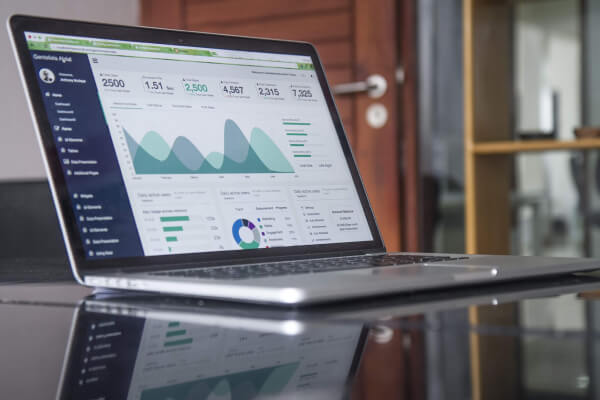In today’s world, almost every organization is data-driven, which has made it compulsory for them to implement approaches to gather data related to customers and markets. Data analytics helps companies to cope with day-to-day computational and data-handling challenges. This blog focuses on the data analysis tools and techniques employed by businesses for optimized functioning.
What is data analytics?
The set of quantitative and qualitative approaches that are implemented to derive insights from huge volumes of data is referred to as data analytics. Data analytics is considered as the fuel for the digital economy as it allows companies to build customer profiles and offer customized products and services to their customer base. The advent of big data applications has enabled organizations to handle business data, cost-effectively. The Big Data analytics domain comprises the following tools:
- Python;
- SAS;
- Hadoop;
- SQL;
- Tableau;
- Spark;
- Splunk;
- R programming.
What are the types of data analytics?
Descriptive Analytics – a form of statistical analysis that employs data aggregation and data mining to transform raw data into a user-friendly form. It allows users to gain insights from past behaviours and predict their impact on future outcomes. Descriptive analytics is introductory and retrospective in nature that can be used to:
- Depict statistical data such as total stock in an inventory, expenditure per customer and sales fluctuation;
- Provides insights regarding the company’s production, finances and operations;
- Summarizes and describes different aspects of a business;
- Reduces website traffic and increases social media engagement.
Predictive Analytics – this is a form of advanced analytics that utilizes data mining, machine learning and machine modelling for predictive data maintenance and fraud detection. Predictive analytics is primarily based on probabilities that can help analyze data that are currently missing or yet to be gathered. It combines previous data that are stored in ERP, CRM, HR and POS systems to identify data patterns.
Companies rely on this form of analytics as it:
- Provides companies with actionable data based on the data available;
- Estimates the likelihood of a future outcome;
- Applies statistical models and algorithms to understand the connection between various datasets;
- Identifies trends in sales activities and purchasing patterns;
- Forecasts demands for inputs from the supply chain, operations and the inventory;
- Helps produce credit scores to determine the probability of customers making timely future credit payments;
- Predicts the future course of action of the organization.
Diagnostic Analytics – diagnostic analytics is retrospective in nature and employs data mining techniques to answer business queries. This helps to determine the cause of an unexpected outcome and mainly involves working on a dashboard. It plays an important role in reviewing social media campaigns by analyzing the number of:
- Mentions for a post;
- Followers;
- Page views;
- Reviews.
Prescriptive Analytics – prescriptive analytics provides advice on possible outcomes, prior to decision-making. It employs a combination of tools and techniques that can be applied to datasets such as:
- Historical and transactional data;
- Real-time data feeds;
- Big data.
Prescriptive analytics is composed of the following tools and techniques:
- Business rules;
- Algorithms;
- Machine learning;
- Computational modelling procedures.
It is an extremely complex form of data analysis and is generally executed by data scientists having the knowledge of prescriptive models. Larger companies often utilize prescriptive analytics to:
- Receive advice and guidance related to the daily course of business;
- Optimize production, scheduling and inventory in the supply chain;
- Deliver the right products at the proper time and enhance the customer experience;
- Prescribe a definite analytical path for the organization based on certain rules and recommendations.
What are the benefits of data analytics?
In today’s data-driven world, information is more than just a resource; it’s a powerful instrument that has transformed industries and businesses. Data analytics is a process that involves reviewing vast amounts of data to identify hidden patterns, gain useful insights, and drive informed decision-making. Here are some examples of the benefits of data analytics:
- Improved decision-making: One of the main benefits of data analytics is that it can give businesses insights they’ve never had before, which helps improve their decision-making capabilities. Businesses can find trends, customer preferences, and market opportunities by looking at data from the past and the present.
- Data-driven innovation: Data analytics drives creativity by helping people find new ideas and ways to grow. Data analytics plays a central role in numerous groundbreaking solutions in various fields, with the aim of enhancing the quality of life.
- Enhanced efficiency: Data analytics is the key to making operations more efficient in many different fields. By looking at operational statistics, businesses can find bottlenecks, inefficiencies, and places where they can make improvements. This makes things run more smoothly, cuts down on waste, and boosts productivity.
- Risk management solutions: Data analytics is a key part of spotting scams and keeping risks in check. For example, financial institutions use advanced analytics to find strange transactions and trends that could be signs of fraud.
- Predictive analytics: As a subset of data analytics, predictive analytics helps companies predict future trends and outcomes. Businesses can make predictions about customer behavior, market trends, and possible problems by looking at data from the past and using statistical tools.
Importance of data analytics
In the information age, where every interaction, transaction, and digital footprint creates data, the importance of data analytics has become a key factor in how companies and institutions move forward. It is a powerful tool that could change how we see, understand, and react to the world around us.
Data analytics is important for companies in a lot of ways. First of all, it can help companies know their customers better. Businesses can learn more about what their customers want and need by looking at their demographics, past purchases, and online activity.
Second, business can use data analytics to spot trends. Businesses can find patterns and trends that can help them make better choices about the future by looking at data over time. This knowledge can be used to create new products, plan marketing campaigns, and decide how to use resources.
Third, business can make better choices with the help of data analytics. Businesses can figure out what is most important to their growth by looking at their data. This information can help people make better choices about everything from making new products to planning marketing efforts.
Understanding the data analysis process
Data analytics involves several processes that include extracting data, analyzing their patterns, relations and connections, categorizing them and gaining insights from them. It utilizes various types of analytics software that employ processes and technology to extract insights out of datasets. The data analysis process is based on the principle of discerning qualitative data from quantitative data. Qualitative data consists of identifiers (attributes or labels) and is generated in the form of:
- Texts, documents and notes;
- Audio and video recordings;
- Images and symbols;
- Interview transcripts.
Quantitative data consists of numbers and values and is statistical and non-descriptive, unlike qualitative data. It is conclusive and measurable, which makes it more favourable to be analyzed, and is usually generated in the form of:
- Texts;
- Experiments;
- Surveys;
- Market research;
- Metrics.
The process of data analysis also involves the understanding of structured and unstructured data. Similar to quantitative data, structured data is highly-structured, organized and can be easily detected in relational databases. Examples of structured data include names and dates, home and email addresses, identification numbers and transactional information. This form of data is generally preferred over unstructured data as it can be easily processed by computing systems.
A high percentage of the data generated falls into the category of unstructured data. It is difficult to collect and process unstructured data using conventional tools and methods. Examples of unstructured data include emails and SMS, audio and video files, server and weblogs, satellite and surveillance imagery and social media.
Harnessing unstructured data uses modern approaches, such as NoSQL databases.
Let us now look at the five steps that organizations need to follow to execute the data analysis process:
Step 1: Understanding and elaborating the need for data analysis;
Step 2: Collecting data from internal (CRM software, ERP systems and marketing automation tools) and external sources (or open data sources);
Step 3: Sorting through the collected data to discard any duplicates or anomalous data and inconsistencies that might skew the analysis;
Step 4: Analysing the data using business intelligence software or data mining techniques, based on the business requirements and resources;
Step 5: Interpreting the results of data analysis and applying them to resolve business problems stepwise.
How does data analytics help in business?
- Data analytics comprises of programming languages that help with data analysis and solve business-related problems;
- Helps determine data collection, processing and the methods required to extract insights;
- Facilitates careful application of insights depending on the type of business, its industry and unique requirements;
- Helps organizations to predict problems prior to their occurrence and map out possible solutions;
- Provides incorporation of better resources and perspectives to the business, leading to the growth of the organization.
If you are interested in developing the required skills to analyze data and communicate it effectively, you should apply to the Diploma in Data Analytics Co-op offered by Toronto School of Management (TSoM). This program can help you enhance your knowledge about data analysis and its practical usages.
Frequently Asked Questions (FAQs)
- What is data analytics in simple words?
Data analytics is the process of gathering, cleaning, analyzing, and the interpretation of data. - What are examples of data analytics?
Examples of data analytics include the following: -
- Data segmentation: the process of classifying customers based on common factors such as age, gender, location, or purchasing history.
- Product recommendations: using data to propose things to customers based on previous purchases or browsing behaviour.
- Fraud detection: the process of identifying patterns of fraudulent conduct using data.
- Forecasting: the process of predicting future demand for products or services using data.
- How does data analytics help in decision-making?
The application of data analytics has the potential to enhance decision-making processes for businesses by offering valuable insights into their operational activities and customer behaviour. - What skills are required to become a data analyst?
To work as a data analyst, you must have a combination of technical and analytical skills, such as:- Knowledge of programming languages such as Python or R.
- Data interpretation requires strong mathematics and statistical skills.
- Expertise in data cleaning and preparation.
- Data visualization abilities are required to successfully communicate findings.
- Database and data querying expertise.
- Critical thinking and problem-solving ability are required.
- What are some popular tools and software used in data analytics?
- Python is a flexible computer language that is often used to analyze and change data.
- R is a programming language and setting for working with statistics and making graphs.
- SQL is a language used to manage relational databases and ask questions about them.
- Excel is used by a lot of people to analyze and display simple data.
- Tableau is a tool for visualizing data that helps you make dashboards that you can work with and share.
- Microsoft’s Power BI is a business analytics service that lets you see and share ideas from data.
- Pandas is a Python tool that lets you change and analyze data.
- Jupyter is an open-source program that lets you make and share documents with live code, math, visualizations, and text.



blackhat free backlinks
ilnmrbcux wwyfb gjtjeev wnrv aawmywnbbpspzbq